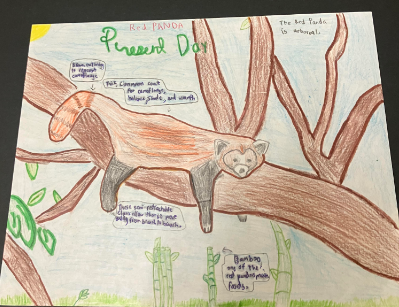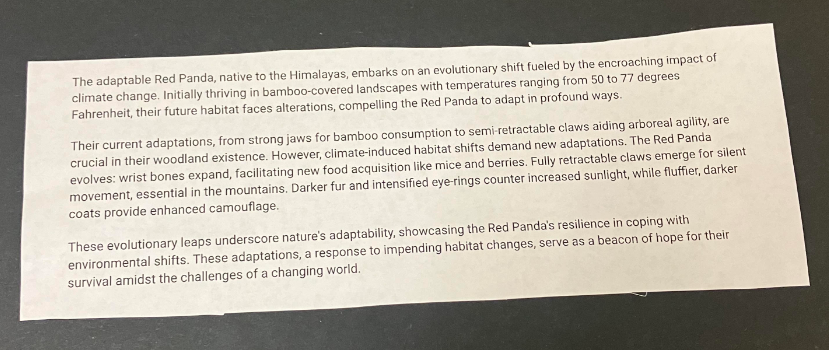The Red Panda, native to the Himalayas, goes on an evolutionary shift fueled by climate change. Initially thriving in bamboo-covered landscapes with temperatures ranging from 50 to 77 degrees Fahrenheit, their future habitat faces change, forcing the Red Panda to adapt in extreme ways. Their current adaptations, from strong jaws for bamboo consumption to semi-retractable claws helping arboreal agility, are important in their woodland existence. However, climate-changing habitat shifts demand new adaptations. The Red Panda evolves by having enlarged wrist bones, and acquiring new food like mice and berries. Fully retractable claws emerge for silent movement, essential in the mountains. Darker fur, intensified eye-rings counter increased sunlight, while fluffier, darker coats provide enhanced camouflage. These evolutionary leaps underscore nature's adaptability, showcasing the Red Panda's resilience in coping with environmental shifts. These adaptations, serve as hope for their survival amidst the challenges of a changing world.
Contact us
Thank you for your interest in contacting Future Engineers. We look forward to connecting with you!
General Inquiries
support@futureengineers.orgSponsorship Inquiries
sponsor@futureengineers.org


